Automatic Assembly Machines
Automatic Assembly Machines Specification
- Control System
- Fully Automatic
- Features
- Good Quality
- Voltage
- 220-415 Volt (v)
- Product Type
- Automatic Assembly Machines
- Power Source
- Electricity
- Operating Type
- Automatic
- Surface Treatment
- Coated
- Color
- Silver
- Warranty
- 1 year
Automatic Assembly Machines Trade Information
- Minimum Order Quantity
- 1 Piece
- Supply Ability
- 10 Pieces Per Month
- Delivery Time
- 10 Days
About Automatic Assembly Machines
An automatic assembly machine is an advanced industrial system used to assemble components into finished or semi-finished products without the need for manual intervention. These machines play a crucial role in manufacturing industries such as automotive, electronics, medical devices, consumer goods, and more. Their primary purpose is to increase efficiency, ensure consistent quality, and reduce labor costs by automating repetitive or complex tasks in the assembly process.
Key Features of an Automatic Assembly Machine:
1. Fully Automated Operation
- The machine performs all the necessary assembly operations automatically, eliminating the need for manual assembly.
- It can handle tasks such as aligning, inserting, fastening, welding, bonding, or screwing parts together to create a finished product or sub-assembly.
2. Multi-Stage Assembly Process
- Many automatic assembly machines are designed to perform multiple operations at different stages of the assembly process. Components are moved from one station to another, where specific tasks are performed.
- This multi-stage process ensures that complex assemblies can be completed efficiently within one machine, reducing production time.
3. Component Feeding System
- The machine is equipped with a component feeding system, such as hoppers, vibratory bowls, or conveyors, which continuously supply parts to the assembly stations.
- Components are sorted, oriented, and delivered to the correct position, ensuring smooth and uninterrupted operation.
4. Robotic Arms and Actuators
- Many automatic assembly machines are equipped with robotic arms or actuators to handle and manipulate components precisely. These arms can pick, place, and assemble parts with great accuracy, even in high-speed environments.
- Robotic systems ensure flexibility, allowing the machine to adapt to various product designs or assembly requirements.
5. Precision and Accuracy
- The machine ensures high precision and accuracy in component placement, alignment, and fastening, which is critical for ensuring product quality.
- Sensors, cameras, and control systems monitor every step of the process to ensure that all parts are assembled correctly. In case of errors, the machine may stop or alert operators to prevent defective products from being produced.
6. Programmable and Flexible
- Modern automatic assembly machines are often equipped with programmable logic controllers (PLCs) or computers, allowing manufacturers to reprogram the machine for different tasks or products.
- This flexibility is particularly useful in industries with frequent product updates, as it allows for quick changes in the assembly process without needing to retool the machine.
7. High-Speed Operation
- Automatic assembly machines are capable of operating at high speeds, significantly increasing production rates compared to manual assembly.
- The machine can handle repetitive tasks 24/7, ensuring consistent output and maximizing production efficiency.
8. Quality Control and Inspection
- Built-in quality control systems, such as vision inspection cameras and sensors, ensure that each assembled product meets the required specifications.
- The machine can detect defects, misalignments, or missing components, and may automatically reject faulty assemblies, ensuring only high-quality products move forward.
9. Customizable for Specific Applications
- Automatic assembly machines can be customized to suit specific products or industries. Depending on the requirements, machines can be designed to handle various types of materials, shapes, and sizes of components.
- Custom tooling, fixtures, and jigs can be integrated to cater to specialized tasks.
10. Modular Design
- Many automatic assembly machines are modular, meaning they consist of separate stations or units that can be configured or expanded as needed. This modularity makes the machine adaptable to changes in production demands or product designs.
11. Data Collection and Analytics
- Advanced machines can be equipped with data collection systems that monitor the performance of the machine, track production metrics, and record any faults or downtime.
- This data can be analyzed to optimize efficiency, identify potential issues, and improve maintenance scheduling.
Applications of Automatic Assembly Machines:
- Automotive Industry Assembly of automotive components such as engines, transmission systems, and electronic modules.
- Electronics Manufacturing and assembly of circuit boards, smartphones, computers, and other consumer electronics.
- Medical Devices Assembly of medical instruments, surgical devices, and diagnostic equipment where precision and consistency are critical.
- Consumer Goods Assembly of products like toys, appliances, and packaging for various consumer products.
- Aerospace Production of aircraft components and systems that require precise assembly and testing.
Benefits of Automatic Assembly Machines:
1. Increased Efficiency
- The machine can work continuously and at high speeds, resulting in significantly higher production rates compared to manual labor.
2. Cost Savings
- While the initial investment may be high, automation reduces labor costs, minimizes material waste, and improves overall productivity.
3. Consistent Quality
- The precision of automatic assembly machines ensures that all products meet strict quality standards, with minimal variations or defects.
4. Reduced Labor Dependency
- By automating repetitive tasks, manufacturers can reduce the need for manual labor, allowing workers to focus on more complex or value-added tasks.
5. Safety Improvements
- Automation reduces the risk of workplace injuries associated with repetitive or hazardous assembly tasks, enhancing overall worker safety.
6. Scalability
- The machine can easily scale up production to meet increasing demand without requiring additional labor or significant changes to the production line.
An automatic assembly machine is an essential tool for modern manufacturing, offering a high degree of precision, efficiency, and flexibility. It enables companies to produce high-quality products consistently while reducing production costs and time.
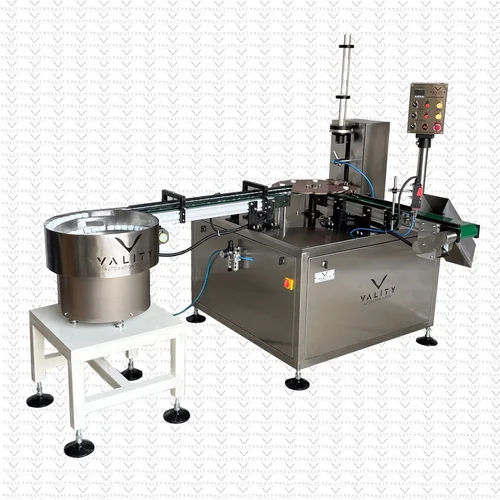
Price 449000 INR/ Piece
- Minimum Order Quantity
- 1 Piece
- Supply Ability
- 10 Pieces Per Month
- Delivery Time
- 10 Days

Price:
- 50
- 100
- 200
- 250
- 500
- 1000+
More Products in Cap assembly Machine Category
Cap Assembly Machine
Price 900000 INR / Unit
Minimum Order Quantity : 1 Unit
Condition : New
Voltage : 415 Volt (v)
Surface Treatment : Coated
Driven Type : Electric
1 Hp Cap Assembly Machine
Price 1050000 INR / Unit
Minimum Order Quantity : 1 Unit
Condition : New
Voltage : 110215 Volt (v)
Surface Treatment : Coated
Driven Type : Electric
Cap Ring Fitting Machine
Price 1050000 INR / Unit
Minimum Order Quantity : 1 Unit
Condition : New
Voltage : 110215 Volt (v)
Surface Treatment : Coated
Driven Type : Electric
Cap Assembly Machine
Price 1050000 INR / Unit
Minimum Order Quantity : 1 Unit
Condition : New
Voltage : 110215 Volt (v)
Surface Treatment : Coated
Driven Type : Electric



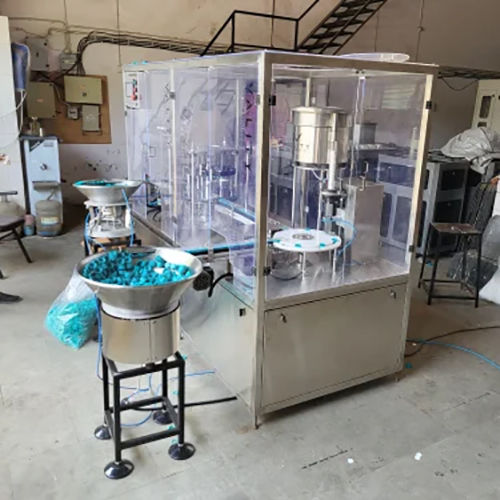
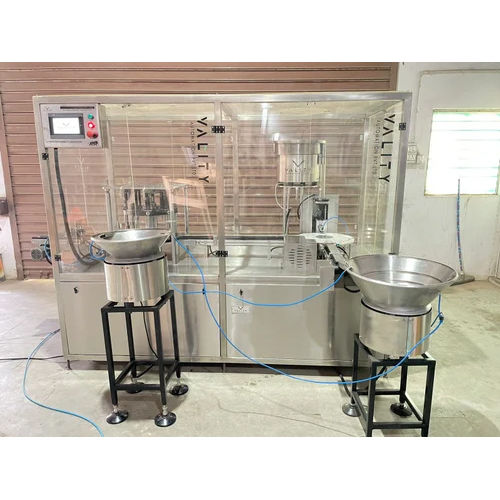
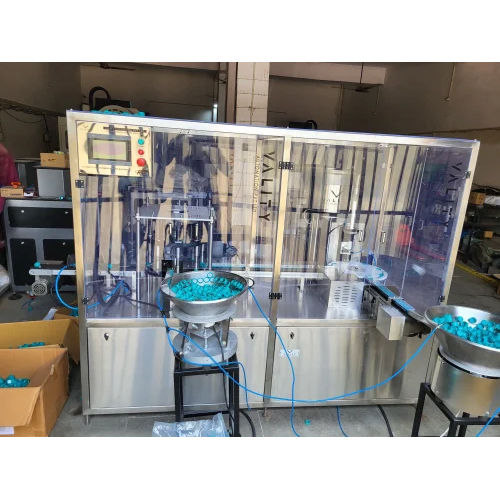
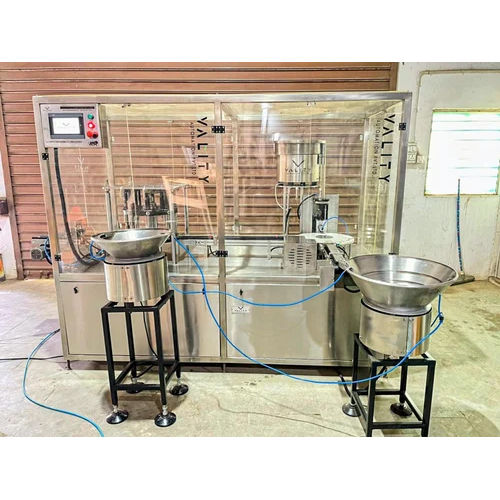


 Send Inquiry
Send Inquiry Send SMS
Send SMS Call Me Free
Call Me Free